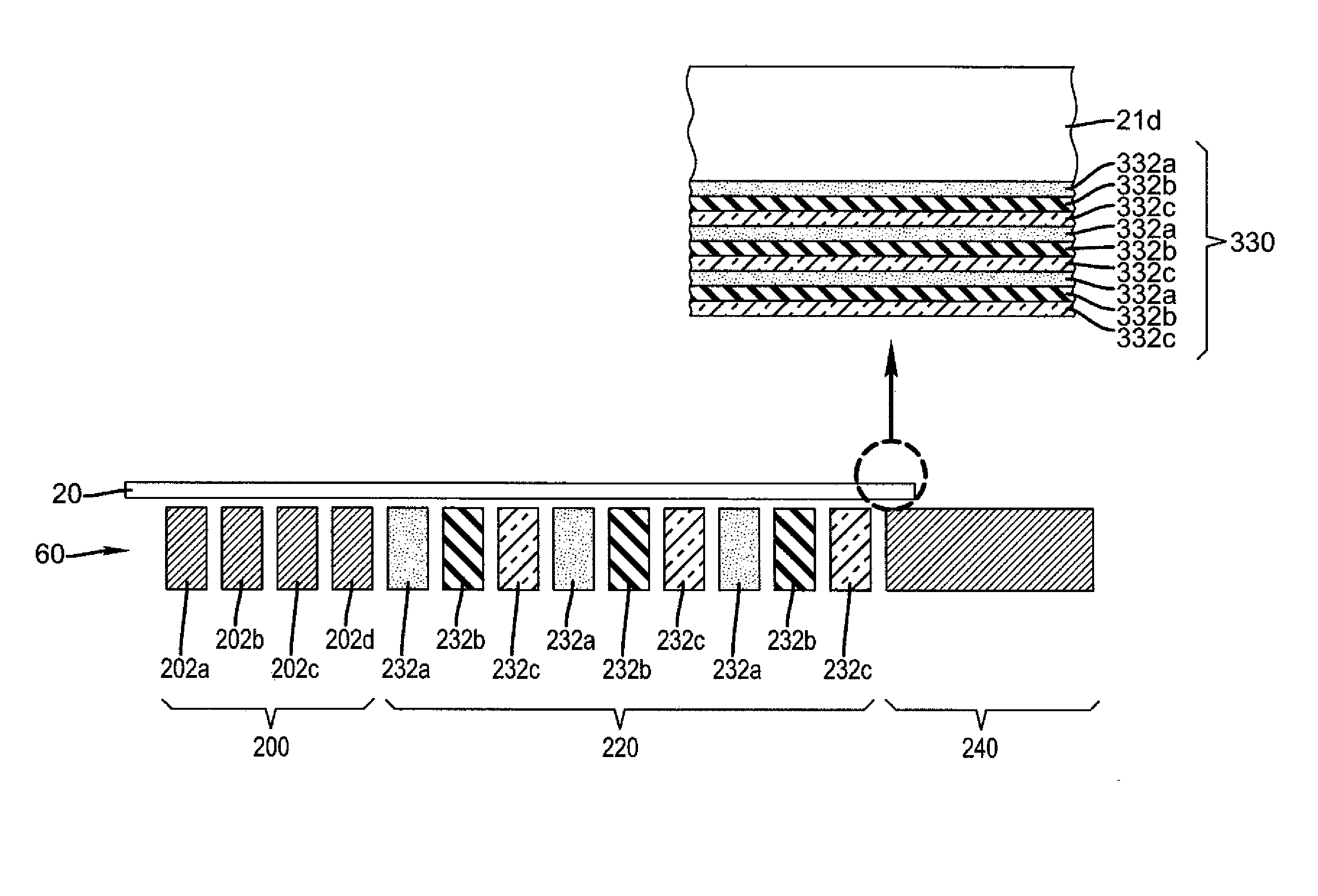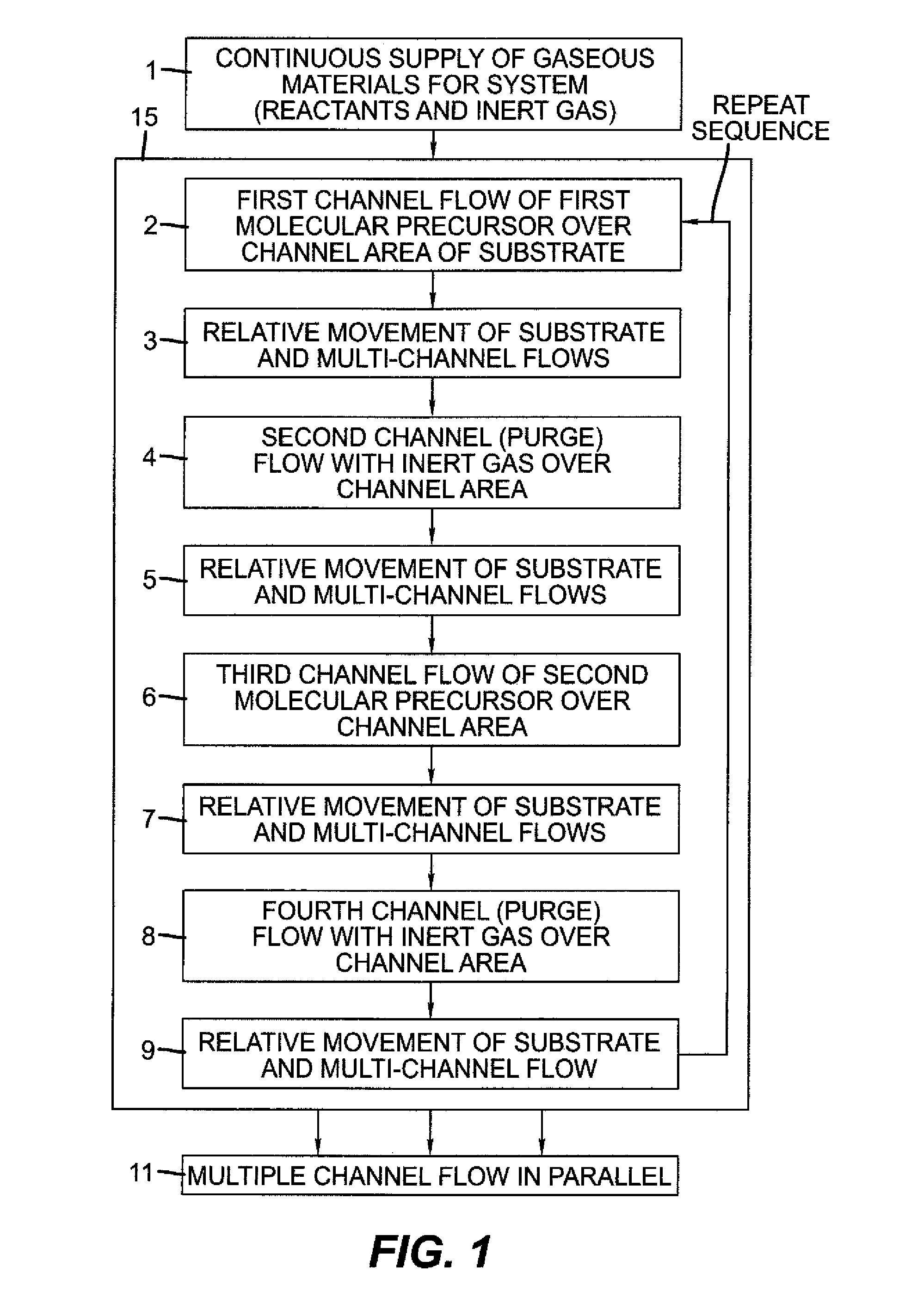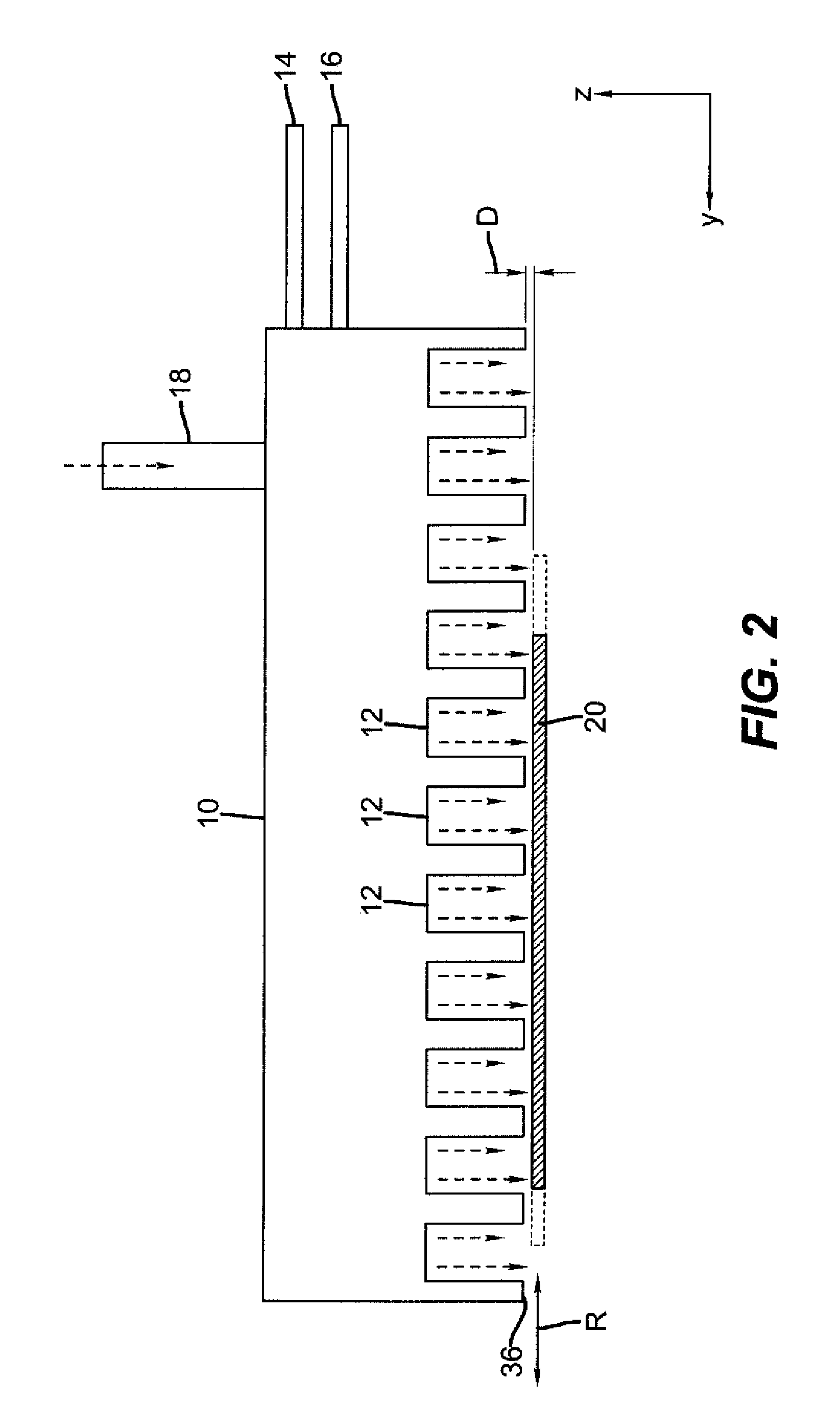Process for atomic layer deposition
a technology of atomic layer and deposition method, which is applied in the direction of chemical vapor deposition coating, solid-state devices, coatings, etc., can solve the problems of reducing the efficiency of fab space utilization, preventing the easy use of continuous web-based systems, and placing adjacent systems at the expense of efficient use of fab space, etc., to achieve excellent field-effect electron mobilities and sufficient performance properties
- Summary
- Abstract
- Description
- Claims
- Application Information
AI Technical Summary
Benefits of technology
Problems solved by technology
Method used
Image
Examples
example 1
[0220]The purpose of this example was to prepare a TFT device with dielectric, semiconductor, and protection layers prepared by the ALD coating apparatus described above. This thin film transistor device (TFT) is comprised of a glass substrate, an ITO (indium tin oxide) gate electrode, a 1100 Å thick Al2O3 dielectric layer, a 200 Å thick ZnO layer, evaporated Al metal source / drain electrodes, and a 200 Å Al2O3 protection layer. The device used to prepare the Al2O3 and ZnO layers has been described in detail in FIGS. 5 to 12 herein. A 2.5×2.5 inch square (62.5 mm square) piece of ITO coated glass was positioned on the platen of this device, held in place by a vacuum assist and heated to 200° C. The platen with the glass substrate was positioned under the coating head that directs the flow of the active precursor gasses. The spacing between the ITO substrate and the coating head was adjusted using a micrometer to 30 microns.
[0221]The coating head has isolated channels through which fl...
example 2
[0222]The purpose of this example was to prepare a TFT device that had a transparent, conductive gate electrode of In-doped ZnO prepared by the same ALD coating system used for the dielectric and semiconductor layers. The devices had the following cross sectional composition: glass substrate / In-doped ZnO gate electrode / Al2O3 dielectric / ZnO semiconductor / Al source and drain electrodes. The In-doped ZnO gate electrode, layer 7A, was prepared as for the ZnO semiconductor layer, except that a flow of trimethylindium vapor is added to the flow of diethyl zinc at a flow rate of 40 sccm, and the layer was grown to approximately 2000 Å thick. The resistivity of the In-doped ZnO gate electrode layer was measured to be 3.3E-02 ohm*cm. An Al2O3 dielectric layer (7B) and a ZnO semiconductor layer (7C) were then coated onto the top of layer 7A using the settings specified in Table 1. Aluminum source and drain contacts were evaporated onto the top of layer 7C through a shadow mask, yielding thin ...
example 3
[0223]The purpose of this example was to prepare a TFT device that had a transparent, conductive gate electrode of In-doped ZnO prepared by the same ALD coating system used for the dielectric, semiconductor, and protection layers. The devices had the following cross sectional composition: glass substrate / In-doped ZnO gate electrode / Al2O3 dielectric / ZnO semiconductor / Al source and drain electrodes / Al2O3 protection layer. The sample was prepared as for Example 2 and electrically tested, and subsequently the protective layer was applied using the ALD coating system and the conditions listed for the protection layer in Table 1 above. The sample was then electrically tested again. Electrical test results for the above device (sample 3) having the In-doped ZnO gate electrode are shown below in Table 2 and are compared to a those of sample 2, which was identical except that it had no protection layer.
TABLE 2Average MobilityAverageSample(cm2 / Vs)Ion / Io / ff1(Devices with ITO gate5.34 × 108elec...
PUM
| Property | Measurement | Unit |
|---|---|---|
| temperature | aaaaa | aaaaa |
| speed | aaaaa | aaaaa |
| separation distance | aaaaa | aaaaa |
Abstract
Description
Claims
Application Information
 Login to View More
Login to View More - R&D
- Intellectual Property
- Life Sciences
- Materials
- Tech Scout
- Unparalleled Data Quality
- Higher Quality Content
- 60% Fewer Hallucinations
Browse by: Latest US Patents, China's latest patents, Technical Efficacy Thesaurus, Application Domain, Technology Topic, Popular Technical Reports.
© 2025 PatSnap. All rights reserved.Legal|Privacy policy|Modern Slavery Act Transparency Statement|Sitemap|About US| Contact US: help@patsnap.com



